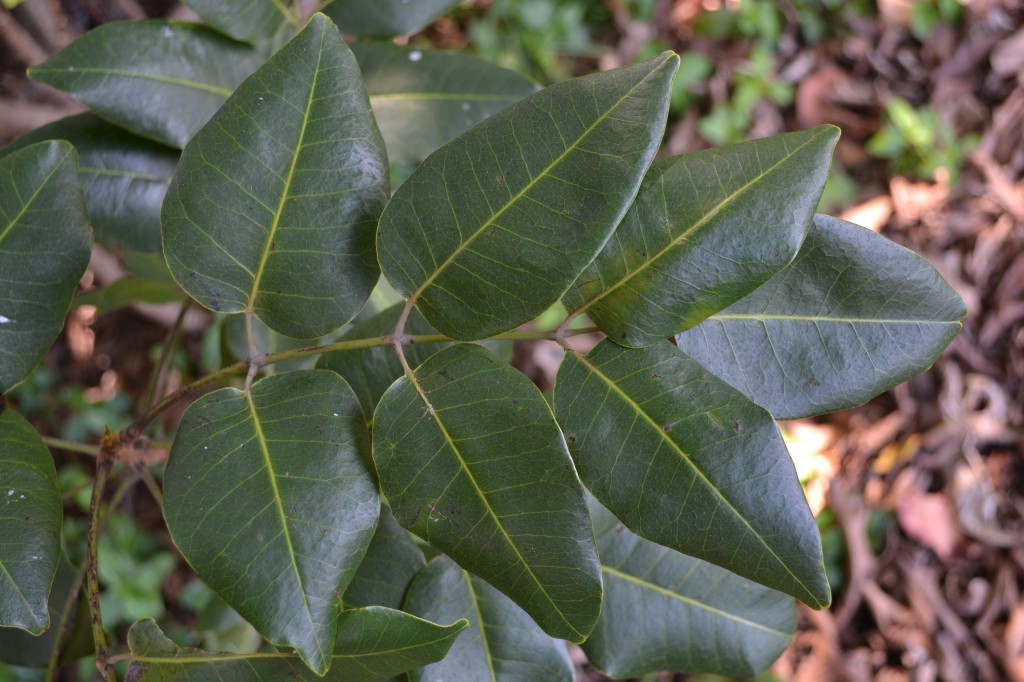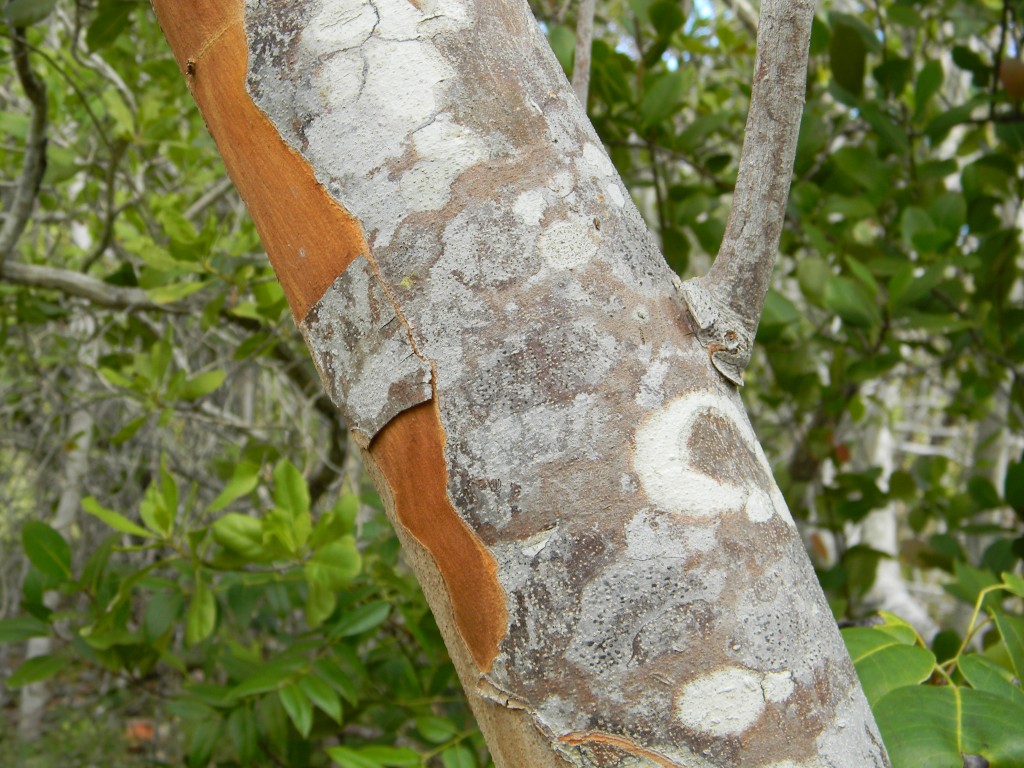Poisonwood
Metopium toxiferum
Plant Family: Anacardiaceae
Leaves: Alternate, once-compound, with 3 to 7 ovate leaflets, often with black resinous dots.
Bark: Flaky, light gray, with smooth orange under-bark; patches of dark sap may be present on the trunk.
Flowers: Dioecious, small, five petals, creamy white, in loose clusters up to 30 cm long; seen late spring to summer.
Fruits: A yellow-orange drupe, to 1 cm, in loose clusters. Although they are poisonous to humans, certain birds, notably the endangered White-crowned Pigeon, eat the fruits without any apparent harm; late summer to fall.
Habitat: Hammocks and pinelands, it is especially common along the east coast and throughout the Keys.
Growth Form: Small to medium-sized tree.
Key Features: Not likely to be confused with any other south Florida tree, the combination of compound leaves, orange under-bark, and the presence of dark sap on any part of the plant is quite distinctive.
Comments: Poisonwood is a relative of Poison Ivy; leaves, twigs, and bark secrete a dark poisonous sap which can cause skin rashes.


